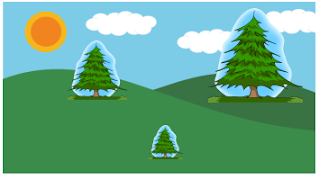
It is a bit embarrassing to
share with you that until recently I had never taken an online class.
Throughout high school and college, all of my coursework has been in person.
Though I feel I’ve done a good job of learning about effective online
curriculum and teaching strategies, I obviously only knew one side of the
story. There are many things I wonder about when it comes to my students. Why did
they do this assignment, but not that one? Why don’t they make more of an
effort to stay on track? How can you be this far behind? Why on earth would you
do 10 assignments in one night?! Thus, I conducted an experiment myself of what
I would be like as a student in their shoes. For this experiment I used free
online coursework provided by Class-central.com in conjunction with the Open
Learning Initiative. “The Open Learning Initiative offers online courses to
anyone who wants to learn or teach. Our aim is to combine open, high-quality
courses, continuous feedback, and research to improve learning and transform
higher education,” (Carnegie Mellon on OLI). I enrolled in Spanish 1 in late
December, a course where a grade and certificate is received by participants.
In my Spanish class there were over 4,000 students enrolled (makes my 260
students seem like a small number!). I was ready to begin.
I started very motivated
about doing well in this course. I completed all the assignments I could in the
beginning, which to my surprise included watching several videos and completing
a written and spoken assignment. At first, I hoped Week 1 would include a quiz
rather than the written assignment because to me that felt like a quick and
simple way to accomplish something in my class. Aha! First realization:
students often do all the open quizzes in my class before attempting an art
project. Why? Perhaps it is because they also feel like a quiz is a quick way
to accomplish something, to fill something in on their grade book, and to see
how they are doing. However, the projects are worth more of their grade and
focus on students putting their learning into practice by demonstrating mastery
of a concept.
The next several weeks went
well. I found myself logging in once a week to complete my homework. This of
course meant I was spending quite a bit of time all at once getting things
done, and I was only taking ONE course. Many of my students take 5 courses at
once. It would be smarter for me to login multiple times a week to get my
assignments done in smaller chunks, but it takes a lot of dedication to find
the time during my busy week to do this. Second realization: Online learning
takes dedication, time management, and self-discipline! This is really no
surprise to me, but it takes more than I once imagined.
In the beginning I received
feedback from every assignment I submitted, usually a couple days after I
submitted it. As the course went on, the number of assignments that the grading
team had to look through became much higher and the feedback I was receiving
seemed to drop off completely. A week went by, two weeks, and still no grade
for my recent assignments. Finally, it had been a month since receiving any
feedback or grades and I also stopped submitting work. Without feedback or
contact from my teacher, I did not login to my class for 4 long weeks! I
thought to myself, “I am my worst student.” If even a motivated person like
myself was capable of blowing off classwork for an entire month, of course my
students could. Many of them have distractions like myself: full time jobs,
family issues, and whatever else life throws at them. However, I do always make
sure to give timely feedback. Realization three: It is easy to get more behind
than you realize and timely feedback is essential for student motivation.
At four weeks behind, the option of giving up and just retaking
this class later (or not) sounded pretty good to me. But wait! How on earth can
I encourage my students to be successful in this online environment if I myself
choose not to succeed? Realization four: giving up is easy, but it is not the
best option! So I got back on. I worked over spring break. I buckled
down and got it done. In the end, I was able to come back and catch up. I took
the quizzes and re-took the quizzes. I studied and worked on the assignments
until I got it all done. As behind as I was, the system was quite forgiving in
letting me catch back up on what I had missed. This is a plus to online
learning, and perhaps even required in this environment.
Through this experience I have gained insight and empathy for my
students. My “why’s” have been answered, and I have learned some Spanish along
the way. I will use these insights when speaking with students and working with
them to help them login and succeed. It is not as easy as you would think, but
that just means we all need to work on our self-discipline and use the tools at
our disposal. Together we can do it!


































